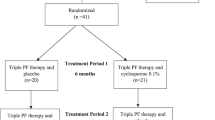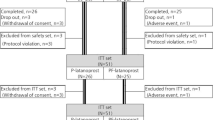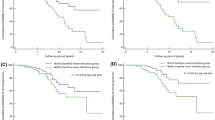Abstract
Patients with glaucoma often experience chronic ocular surface diseases, potentially underestimated in frequency and severity. To provide updated estimates of ocular surface diseases linked to prostaglandin analogue antiglaucoma eye medication, a systematic review was conducted. Twenty-seven publications were selected from databases like PubMed, Scopus, and Web of Science, following a search strategy targeting glaucoma and prostaglandins while excluding certain medications ‘(Glaucoma AND prostaglandins OR ‘prostaglandin analogues’)(‘eye drops’ OR ‘artificial tears’ OR ‘ocular surface’ OR ‘dry eye’ OR ‘dry eye syndrome’ OR ‘ocular surface disease’ OR ‘tear film’) NOT (‘beta blockers’ OR ‘alpha adrenergic agonists’ OR ‘carbonic anhydrase inhibitors’ OR ‘rho-quinase’)’. The review revealed a correlation between prostaglandin analogue use and ocular surface damage, assessing parameters such as tear break-up time, Schirmer test value, ocular surface staining, hyperaemia score, and meibomian gland characteristics. Some studies explored switching patients to alternative glaucoma medications, noting varied effects on ocular surface parameters. Comparisons suggested better tolerance and outcomes with preservative-free options over prostaglandins. Additionally, the impact of treatment duration and diquafosol on ocular health, including meibomian gland loss, was examined across different formulations. Although a link between prostaglandin analogues (with or without preservatives) and ocular surface damage was established, inconsistencies in methodologies and assessment across studies were noted. This comprehensive review, spanning a decade of glaucoma research, underscores the need for re-evaluation of treatment strategies in ophthalmology. It stresses the significance of informed decision-making for enhanced glaucoma care, taking into account the observed effects of various medications on eye health.
摘要
青光眼患者常伴发慢性眼表疾病, 其发病率和严重性可能被低估。为提供与前列腺素类似物抗青光眼眼药相关的眼表疾病的相互关联性, 本文进行了系统综述。 从 PubMed、Scopus 和 Web of Science 等数据库中筛选出 27 篇文献, 遵循针对青光眼和前列腺素的搜索方法, 同时排除某些治疗的词汇如 (“ (青光眼和前列腺素或‘前列腺素类似物’) (‘滴眼液’或‘人工泪液’或‘眼表’或‘干眼’或‘干眼综合征’或‘眼表疾病’或‘泪膜’) 而非 (‘β 受体阻滞剂’或‘α 肾上腺素能激动剂’或‘碳酸酐酶抑制剂’或‘rho-奎酶’)”) 。本文揭示了前列腺素类似物的使用与眼表损伤之间的关系, 评估了泪膜破裂时间、Schirmer 测试值、眼表染色、充血评分和睑板腺特征等参数的变化特征。一些研究探索了为患者改用替代性青光眼药物, 并观察其对眼表参数的不同影响。与前列腺素相比, 不含防腐剂的药物具有更好的耐受性和治疗效果。此外, 本文还探讨了不同药物的治疗持续时间和地夸磷索对眼部健康 (包括睑板腺损失) 的影响。尽管前列腺素类似物 (含或不含防腐剂) 与眼表损伤之间存在关联, 但由于各项研究的方法和评估不一致。这项跨越十年的这篇针对青光眼研究的系统综述强调了重新评估眼科治疗策略的必要性。本文强调了知情决策对于加强青光眼护理的重要性, 同时考虑到了各种药物对眼健康的影响。
This is a preview of subscription content, access via your institution
Access options
Subscribe to this journal
Receive 18 print issues and online access
$259.00 per year
only $14.39 per issue
Buy this article
- Purchase on SpringerLink
- Instant access to full article PDF
Prices may be subject to local taxes which are calculated during checkout

Similar content being viewed by others
References
Stein JD, Kim DS, Niziol LM, Talwar N, Nan B, Musch DC, et al. Differences in rates of glaucoma among Asian Americans and other racial groups, and among various Asian ethnic groups. Ophthalmology. 2011;118:1031–7.
Foster PJ, Buhrmann R, Quigley HA, Johnson GJ. The definition and classification of glaucoma in prevalence surveys. Br J Ophthalmol. 2002;86:238–42.
Tham YC, Li X, Wong TY, Quigley HA, Aung T, Cheng CY. Global prevalence of glaucoma and projections of glaucoma burden through 2040: a systematic review and meta-analysis. Ophthalmology. 2014;121:2081–90.
Bourne RRA, Flaxman SR, Braithwaite T, Cicinelli MV, Das A, Jonas JB, et al. Magnitude, temporal trends, and projections of the global prevalence of blindness and distance and near vision impairment: a systematic review and meta-analysis. Lancet Glob Health. 2017;5:e888–e897.
Digiuni M, Fogagnolo P, Rossetti L. A review of the use of latanoprost for glaucoma since its launch. Expert Opin Pharmacother. 2012;13:723–45.
Bean GW, Camras CB. Commercially available prostaglandin analogs for the reduction of intraocular pressure: similarities and differences. Surv Ophthalmol. 2008;53:S69–S84.
Stewart WC, Konstas AGP, Nelson LA, Kruft B. Meta-analysis of 24-hour intraocular pressure studies evaluating the efficacy of glaucoma medicines. Ophthalmology. 2008;115:1117–1122.e1.
Feldman RM. Conjunctival hyperemia and the use of topical prostaglandins in glaucoma and ocular hypertension. J Ocul Pharm Ther. 2004;19:23–35.
Wolffsohn JS, Arita R, Chalmers R, Djalilian A, Dogru M, Dumbleton K, et al. TFOS DEWS II diagnostic methodology report. Ocul Surf. 2017;15:539–74.
Kobia-Acquah E, Gyekye GAP, Antwi-Adjei EK, Koomson NY, Cobbina F, Donkor R, et al. Assessment of ocular surface disease in glaucoma patients in Ghana. J Glaucoma. 2021;30:180–6.
Seen S, Tong L. Dry eye disease and oxidative stress. Acta Ophthalmol. 2018;96:e412–e420.
Fineide F, Lagali N, Adil MY, Arita R, Kolko M, Vehof J, et al. Topical glaucoma medications - clinical implications for the ocular surface. Ocul Surf. 2022;26:19–49.
Zhang X, Vadoothker S, Munir WM, Saeedi O. Ocular surface disease and glaucoma medications: a clinical approach. Eye Contact Lens. 2019;45:11–18.
Li G, Akpek EK, Ahmad S. Glaucoma and ocular surface disease: More than meets the eye. Clin Ophthal. 2022;16:3641–9.
Page MJ, McKenzie JE, Bossuyt PM, Boutron I, Hoffmann TC, Mulrow CD, et al. The PRISMA 2020 statement: an updated guideline for reporting systematic reviews. BMJ. 372, n71 (2021).
Zaleska-Żmijewska A, Strzemecka E, Wawrzyniak ZM, Szaflik JP. Extracellular MMP-9-based assessment of ocular surface inflammation in patients with primary open-angle glaucoma. J Ophthalmol. 2019;2019:1240537.
Misiuk-Hojlo M, Pomorska M, Mulak M, Rekas M, Wierzbowska J, Prost M, et al. The RELIEF study: tolerability and efficacy of preservative-free latanoprost in the treatment of glaucoma or ocular hypertension. Eur J Ophthalmol. 2019;29:210–5.
Lopes NLV, Gracitelli CPB, Chalita MR, de FARIA NVL. Ocular surface evaluation after the substitution of benzalkonium chloride preserved prostaglandin eye drops by a preservative-free prostaglandin analogue. Med Hypothesis Discov Innov Ophthalmol. 2019;8:52–56.
Kumar S, Singh T, Ichhpujani P, Vohra S. Ocular surface disease with BAK preserved travoprost and polyquaternium 1(Polyquad) preserved travoprost. Rom J Ophthalmol. 2019;63:249–56.
Kumar G, Chaurasia RC, Singh SP. Efficacy and adverse effects of topical latanoprost with respect to preservative in patients of poag. J Clin Diagn Res. 2018;12:FC06–FC09.
Kumar S, Singh T, Ichhpujani P, Vohra S, Thakur S. Correlation of ocular surface disease and quality of life in Indian glaucoma patients: BAC-preserved versus BAC-free travoprost. Turk J Ophthalmol. 2020;50:75–81.
El Ameen A, Vandermeer G, Khanna RK, Pisella PJ. Objective ocular surface tolerance in patients with glaucoma treated with topical preserved or unpreserved prostaglandin analogues. Eur J Ophthalmol. 2019;29:645–53.
Ha JY, Sung MS, Park SW. Effects of preservative on the meibomian gland in glaucoma patients treated with prostaglandin analogues. Chonnam Med J. 2019;55:156.
Lee SY, Lee K, Park CK, Kim S, Bae HW, Seong GJ, et al. Meibomian gland dropout rate as a method to assess meibomian gland morphologic changes during use of preservative-containing or preservative-free topical prostaglandin analogues. PLoS One. 2018;14:e0218886.
Sedlak L, Zych M, Wojnar W, Wyględowska-Promieńska D. Effect of topical prostaglandin F2α analogs on selected oxidative stress parameters in the tear film. Med (Kaunas). 2019;55:366.
Ruangvaravate N, Choojun K, Srikulsasitorn B, Chokboonpiem J, Asanatong D, Trakanwitthayarak S. Ocular surface changes after switching from other prostaglandins to tafluprost and preservative-free tafluprost in glaucoma patients. Clin Ophthalmol. 2020;14:3109–19.
Guo Y, Ha JY, Piao HL, Sung MS, Park SW. The protective effect of 3% diquafosol on meibomian gland morphology in glaucoma patients treated with prostaglandin analogs: a 12-month follow-up study. BMC Ophthalmol. 2020;20:277.
Erb C, Stalmans I, Iliev M, Muñoz-Negrete FJ. Real-world study on patient satisfaction and tolerability after switching to preservative-free latanoprost. Clin Ophthalmol. 2021;15:931–8.
Hagras SM, Al-Duwailah OKH, Nassief MA, Abdelhameed AG. Crossover randomized study comparing the efficacy and tolerability of preservative-free tafluprost 0.0015% to latanoprost 0.005% in patients with primary open-angle glaucoma. Indian J Ophthalmol. 2021;69:2475–80.
Seong HJ, Lee K, Lee SJ, Kim S, Park JW. Efficacy and safety of preservative-free latanoprost eyedrops compared with preserved prostaglandin analogues in patients with open-angle glaucoma. Korean J Ophthalmol. 2021;35:235–41.
Muz OE, Dagdelen K, Pirdal T, Guler M. Comparison of BAK-preserved latanoprost and polyquad-preserved travoprost on ocular surface parameters in patients with glaucoma and ocular hypertension. Int Ophthalmol. 2021;41:3825–35.
Rossi GCM, Scudeller L, Rolle T, Pasinetti GM, Bianchi PE. From benzalkonium chloride-preserved latanoprost to polyquad-preserved travoprost: A 6-month study on ocular surface safety and tolerability. Expert Opin Drug Saf. 2015;14:619–23.
Lopes JF, Hubatsch DA, Amaris P. Effect of benzalkonium chloride-free travoprost on intraocular pressure and ocular surface symptoms in patients with glaucoma previously on latanoprost: An open-label study Glaucoma. BMC Ophthalmol. 2015;15:166.
Walimbe T, Chelerkar V, Bhagat P, Joshi A, Raut A. Effect of benzalkonium chloride-free latanoprost ophthalmic solution on ocular surface in patients with glaucoma. Clin Ophthalmol. 2016;10:821–7.
Moussa WGEH, Farhat RG, Nehme JC, Sahyoun MA, Schakal AR, Jalkh AE, et al. Comparison of efficacy and ocular surface disease index score between bimatoprost, latanoprost, travoprost, and tafluprost in glaucoma patients. J Ophthalmol. 2018;2018:1319628.
Rahmatnejad K, Rapuano CJ, Ichhpujani P, Wizov SS, Moster MR, Hark LA, et al. The effects of latanoprost with benzalkonium chloride versus travoprost with sofzia on the ocular surface. Eye Contact Lens. 2018;44:S93–S98.
Wong TT, Aung T, Ho CL. Ocular surface status in glaucoma and ocular hypertension patients with existing corneal disorders switched from latanoprost 0.005% to tafluprost 0.0015%: comparison of two prostaglandin analogues with different concentrations of benzalkonium chloride. Clin Exp Ophthalmol. 2018;46:1028–34.
Diagourtas A, Kagelaris K, Oikonomakis K, Droulias A, Kokolakis N, Papaconstantinou D, et al. Prospective study comparing Xalatan® eye drops and two similar generics as to the efficacy and safety profile. Eur J Ophthalmol. 2018;28:378–84.
Kim DW, Shin J, Lee CK, Kim M, Lee S, Rho S. Comparison of ocular surface assessment and adherence between preserved and preservative-free latanoprost in glaucoma: a parallel-grouped randomized trial. Sci Rep. 2021;11:14971.
Kim JM, Park SW, Seong M, Ha SJ, Lee JW, Rho S, et al. Comparison of the safety and efficacy between preserved and preservative-free latanoprost and preservative-free tafluprost. Pharm (Basel). 2021;14:501.
Wu JH, Wang TH, Huang JY, Su CC. Ocular surface disease in glaucoma patients randomized to benzalkonium chloride-containing latanoprost and preservative-free bimatoprost. J Ocul Pharm Ther. 2021;37:556–64.
Lee TH, Sung MS, Heo H, Park SW. Association between meibomian gland dysfunction and compliance of topical prostaglandin analogs in patients with normal tension glaucoma. PLoS One. 2018;13:e0191398.
Steven DW, Alaghband P, Lim KS. Preservatives in glaucoma medication. Br J Ophthalmol. 2018;102:1497–503.
Pellinen P, Huhtala A, Tolonen A, Lokkila J, Mäenpää J, Uusitalo H. The cytotoxic effects of preserved and preservative-free prostaglandin analogs on human corneal and conjunctival epithelium in vitro and the distribution of benzalkonium chloride homologs in ocular surface tissues in vivo. Curr Eye Res. 2012;37:145–54.
Liang H, Baudouin C, Daull P, Garrigue JS, Brignole-Baudouin F. In vitro corneal and conjunctival wound-healing assays as a tool for antiglaucoma prostaglandin formulation characterization. Front Biosci (Landmark Ed). 2022;27:147.
Keating GM. Diquafosol ophthalmic solution 3%: a review of its use in dry eye. Drugs. 2015;75:911–22.
Acknowledgements
I wish to express my gratitude to the Ophthalmology Department at the University Hospital Virgen Macarena for their collaboration and support in this project. The expertise of the hospital staff significantly enhanced our research. Additionally, I appreciate the University of Seville for providing essential resources. The collective efforts of both institutions have been instrumental in advancing our understanding of how prostaglandin analogues can affect the ocular surface.
Funding
The authors confirm that they have no affiliations with or participation in any organisation or entity with any financial interest (including honoraria, educational grants, participation in speakers’ bureaus, membership, employment, consultancies, stock ownership, or other equity interests, as well as expert testimony or patent-licensing arrangements) or non-financial interest (such as personal or professional relationships, affiliations, knowledge, or beliefs) related to the subject matter or materials discussed in this manuscript. This study did not receive specific grants from funding agencies in the public, commercial, or non-profit sectors. Funding for the English language revision was provided by RICORS (RD21/0002/0011, funded by MCIN-Instituto de Salud Carlos III and co-funded by European Union–NextGenerationEU; Plan de Recuperación Transformación y Resiliencia). The editing of this manuscript was sponsored by RETICS OFTARED (RD16/0008/0010, funded by Instituto de Salud Carlos III and co-funded by the European Union, ERDF/ESF, ‘Investing in your future’).
Author information
Authors and Affiliations
Contributions
RMC was responsible for designing the review protocol, writing the protocol and report, conducting the search, screening potentially eligible studies, extracting and analysing data, interpreting results, updating reference lists and creating the tables. MCSG was responsible for designing the review protocol, screening potentially eligible studies, writing the protocol and report, conducting the search and creating the tables. MCM contributed to extracting and analysing data, interpreting results and provided feedback on the report. RMC was tasked with formulating the review protocol, composing both the protocol and report, overseeing the search, screening potentially eligible studies, extracting and analysing data, interpreting results, updating reference lists, and generating the ‘Summary of Findings’ tables. MCSG was responsible for devising the review protocol, extracting data, screening potentially eligible studies, and drafting this report. MCM contributed to the report’s composition and provided feedback.
Corresponding author
Ethics declarations
Competing interests
The authors declare no competing interests.
Additional information
Publisher’s note Springer Nature remains neutral with regard to jurisdictional claims in published maps and institutional affiliations.
Rights and permissions
Springer Nature or its licensor (e.g. a society or other partner) holds exclusive rights to this article under a publishing agreement with the author(s) or other rightsholder(s); author self-archiving of the accepted manuscript version of this article is solely governed by the terms of such publishing agreement and applicable law.
About this article
Cite this article
Monge-Carmona, R., Caro-Magdaleno, M. & Sánchez-González, M.C. Association between the use of prostaglandin analogues and ocular surface disease: a systematic review. Eye 39, 28–39 (2025). https://doi.org/10.1038/s41433-024-03372-y
Received:
Revised:
Accepted:
Published:
Issue date:
DOI: https://doi.org/10.1038/s41433-024-03372-y



